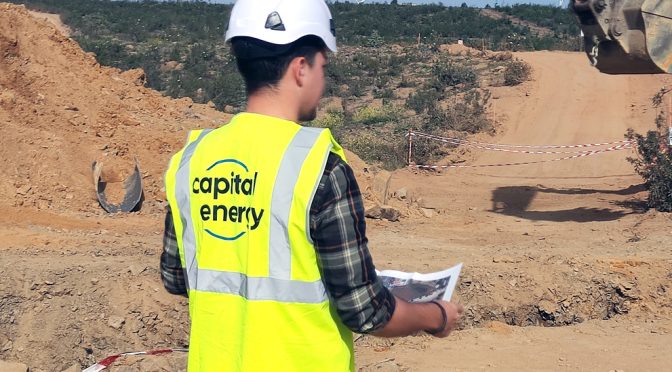This facility will have a relevant tractor effect on the Spanish industrial fabric
The wind farm, which will have a capacity of 34.8 megawatts (MW), will be built by the Galician company CRC and a large part of its turbines, supplied by General Electric, will be built in various factories with which the multinational works in Spain
It will be located in the Huelva town of Ayamonte, will generate an annual tax impact on local coffers of around 100,000 euros and will lead to the creation of more than 100 direct jobs during the peak periods of its construction.
Huelva, March 09, 2022.- Capital Energy, a Spanish energy company founded two decades ago and whose vocation is to become the first vertically integrated 100% renewable operator in the Iberian Peninsula, continues to make progress in consolidating its renewable project in Andalusia.
The company has already begun work on the Ayamonte wind farm, which will be located in the Huelva municipality of the same name and which, thanks to an investment of around 36 million euros, will have an installed capacity of 34.8 megawatts (MW). This facility is scheduled to be commissioned during the first quarter of 2023.
Its six General Electric Cypress model wind turbines, with a rotor diameter of 158 meters and a hub height of 121 meters, will be capable of generating more than 78,000 megawatt hours (MWh) of clean energy per year, equivalent to the consumption of more than 29,000 homes Andalusians, and to also avoid the emission of some 29,000 tons of CO2.
Ayamonte will have a relevant tractor effect on the Spanish industrial fabric, in line with Capital Energy’s commitment to the socioeconomic development of all the territories in which it is present. The infrastructure company CRC, founded in A Coruña in 1940, will carry out the engineering, supply, construction and commissioning of this new renewable energy facility, as well as its evacuation infrastructure.
It should also be noted that a large part of the aforementioned turbines will be built in various plants with which GE works in Spain: both the blades, whose manufacture will be carried out by the company LM Wind Power in Castellón and which will be the largest produced from a single part in a global commercial project, such as towers and other electrical and mechanical components.
Ayamonte will also promote the creation of more than 100 direct jobs during the peak periods of the works. In the operation and maintenance phase, it is expected that it will provide stable and quality employment to four professionals in the area and will contribute to generating about 10 indirect jobs.
On the other hand, this wind farm will have a contribution to GDP throughout its useful life equivalent to close to 700,000 euros per year and a fiscal impact on local coffers (Ayamonte and Villablanca) of almost 100,000 euros per year. To this recurring amount will be added the punctual payment of the ICIO, close to one million euros.
Andalusia, a key community for Capital Energy
Capital Energy is finalizing the works on its first wind farm in Andalusia, Loma de los Pinos, with an installed capacity of 38.5 MW and located in the Sevillian town of Lebrija. This renewable facility, which is scheduled to come into operation in the first half of this year, also equips General Electric turbines. Its seven wind turbines, already installed, will generate approximately 90,000 MWh per year, enough to supply more than 33,000 Andalusian homes with clean electricity. Loma de los Pinos will also prevent the annual emission into the atmosphere of almost 33,000 tons of CO2.
Capital Energy also continues to advance in the construction of its second wind farm in the community, El Barroso. Located in the Cadiz municipality of Jerez de la Frontera, it will have an installed capacity of 27.5 MW and its five wind turbines, also of the General Electric Cypress model, will be capable of supplying more than 65,000 MWh of clean energy per year, equivalent to the consumption of some 25,000 homes in the region, and to avoid the emission of approximately 24,000 tons of CO2 per year.
The start-up of both parks will entail a joint investment of around 68 million euros, the creation of some 260 direct jobs during the peak periods of the works and a combined tax contribution of more than one million euros. In the operation and maintenance phase, it is expected that they will permanently employ eight professionals from the area and generate an annual economic impact on the local coffers (IBI and IAE, mainly), of around 200,000 euros.


